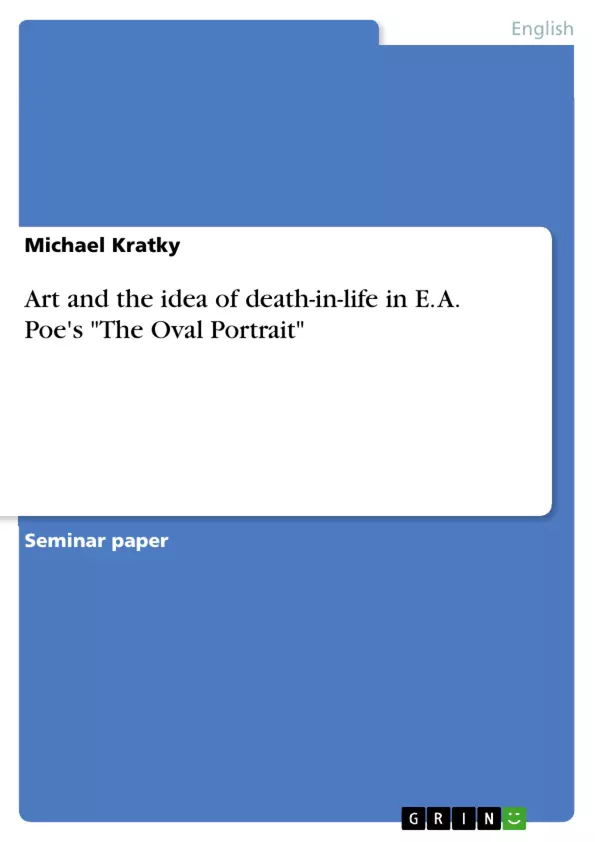This paper deals with the central idea of E.A. Poe's short story "The Oval Portrait", which resides in the confusing relationship between art, life and death. The paper focuses on the ambiguity of the creative process of art and also depicts the effect on both the narrator and the reader.
Table of Contents
- Introduction: Death as "the Most Poetical Topic of the World"
- The Contents of "The Oval Portrait"
- Art-Arabesque as a Clue to Deception and Irony
- The "Life-likeliness" of Art
- Death in Life - The Rivalry between the Artwork and the Model
- The Idea of Death in Life in the Framework
- The Fatalism and the Problems of Translation
- Conclusion: The Effect of Irritation
Objectives and Key Themes
The main objective of this text is to analyze the relationship between art, life, and death in Edgar Allan Poe's "The Oval Portrait." The text explores how Poe uses the motif of the beautiful death of a young woman to address themes of artistic obsession, the nature of beauty, and the limitations of representation.
- The Role of Death in Art and Literature
- The Power of Artistic Creation and Its Potential for Destruction
- The Nature of Beauty and Its Relationship to Mortality
- The Ambiguous Nature of Reality and the Perception of Truth
- The Irony of Art's Ability to Both Capture and Impoverish Life
Chapter Summaries
- Introduction: Death as "the Most Poetical Topic of the World": This chapter introduces the concept of "beautiful death" in Poe's work and places it within the context of his time. It explores how Poe uses the death of beautiful women as a recurring motif to address themes of beauty, mortality, and artistic creation.
- The Contents of "The Oval Portrait": This chapter provides a summary of the narrative structure of "The Oval Portrait," highlighting the role of the unnamed narrator and his discovery of the titular painting. It introduces the central themes of the story, such as the relationship between the artist, his wife, and the portrait.
- Art-Arabesque as a Clue to Deception and Irony: This chapter focuses on the use of the arabesque motif in the story and its implications for the reader's understanding of the narrative. It explores the ambiguity of the narrative and the potential for the reader to misinterpret the events, emphasizing the importance of the frame and the artificiality of art in constructing meaning.
Keywords
The text explores key concepts such as the "beautiful death," artistic obsession, the nature of beauty, the limitations of representation, the ambiguity of reality, and the role of the frame in art.
- Quote paper
- Michael Kratky (Author), 2002, Art and the idea of death-in-life in E. A. Poe's "The Oval Portrait", Munich, GRIN Verlag, https://www.grin.com/document/54794



